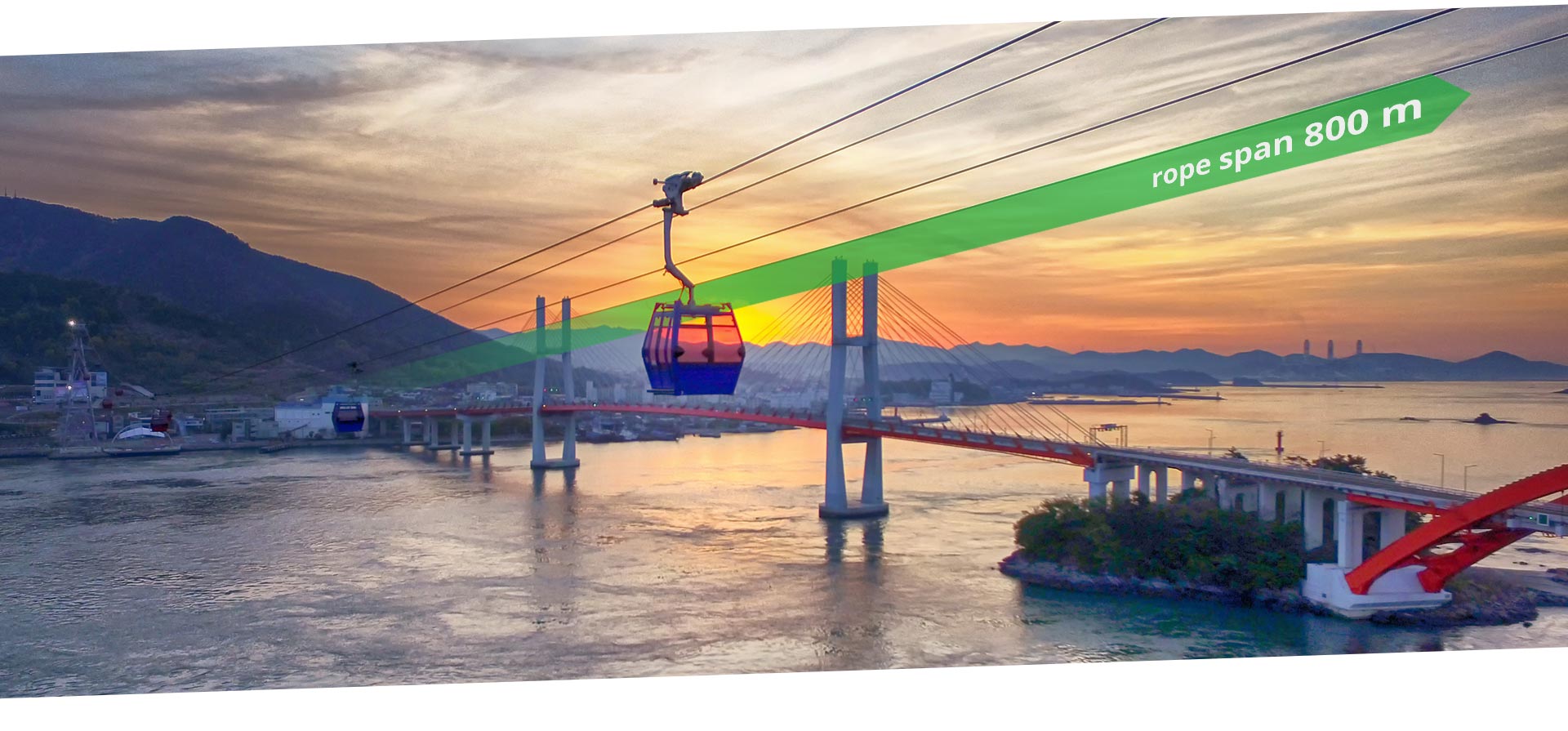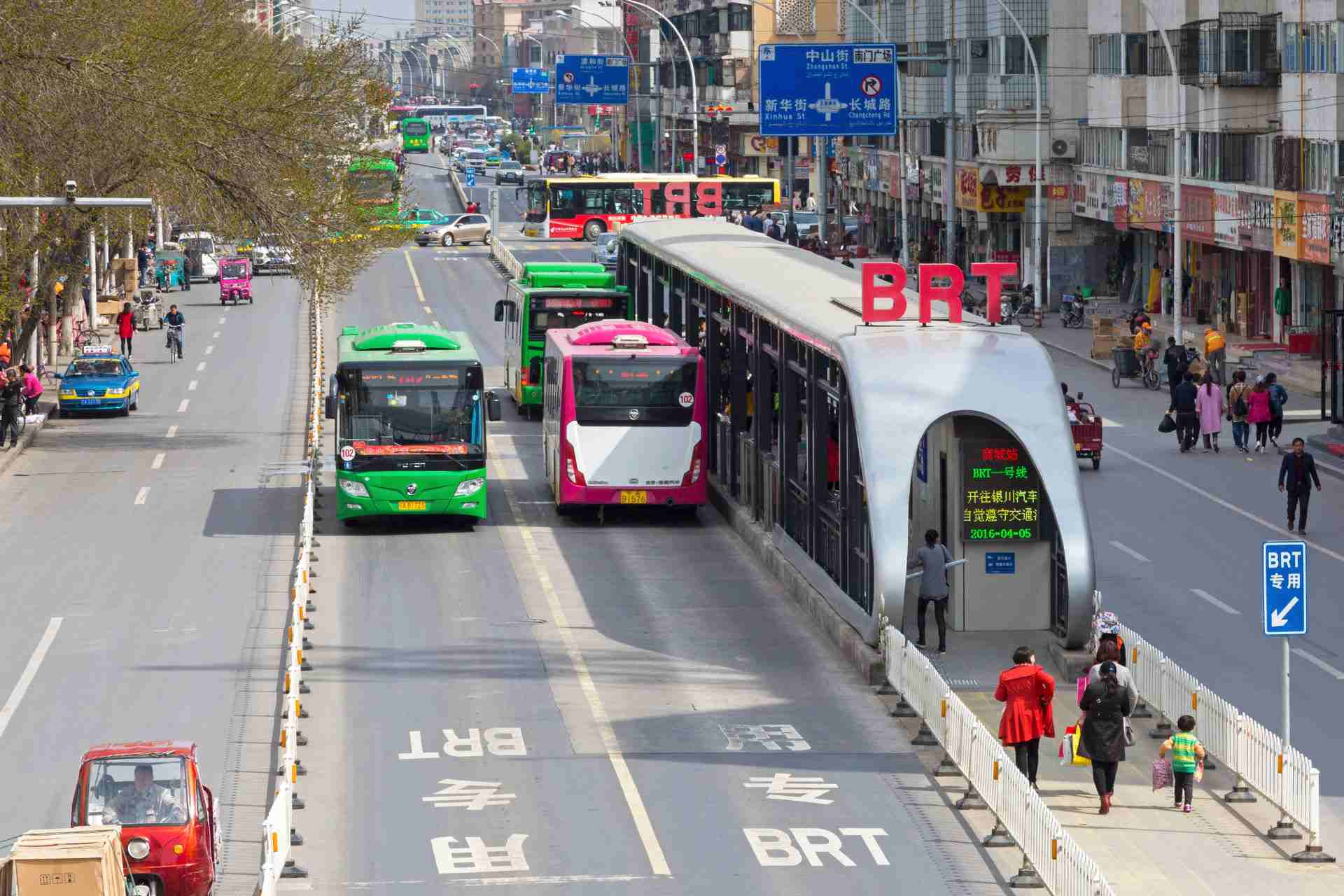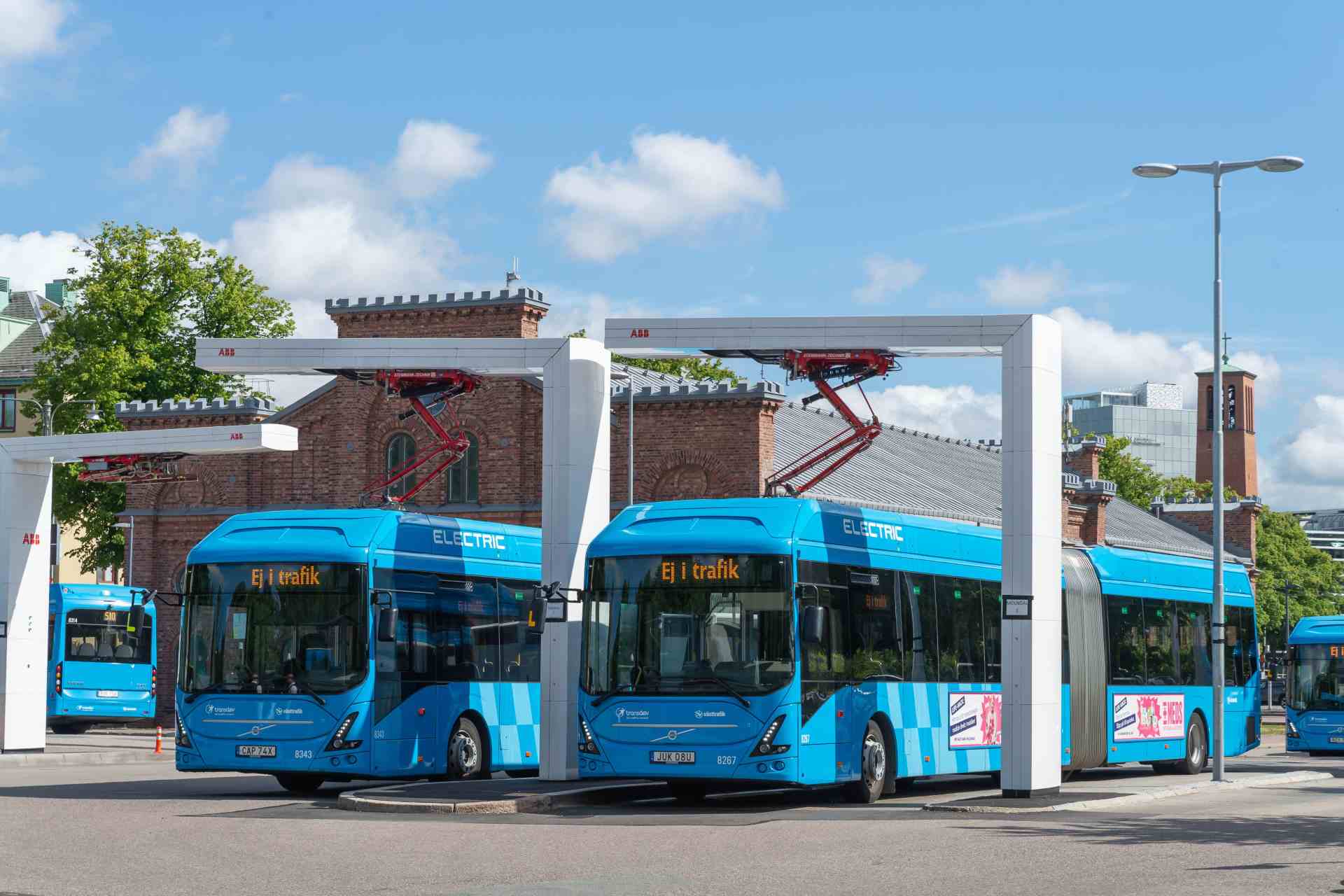
Bus Rapid Transit (BRT)
In Bus Rapid Transit (BRT) applications, typically battery-powered electric buses or hybrid buses are used, but hydrogen buses or trolley buses are also used occasionally.
 In public transport today, the hybrid or electric bus is generally available as a two-axle 12 m bus, a three-axle 15 m bus, an 18 m single-articulated bus, or a multi-articulated bus with lengths of 25 to 32 m.
In public transport today, the hybrid or electric bus is generally available as a two-axle 12 m bus, a three-axle 15 m bus, an 18 m single-articulated bus, or a multi-articulated bus with lengths of 25 to 32 m.
In many medium-sized cities, an efficient Bus Rapid Transit (BRT) system or a trolleybus system can even make trams (or even metros) superfluous. Bus Rapid Transit (BRT) systems are completely isolated from the motorized individual traffic and operate on separate tracks with exclusive right-of-way (ROW). Most BRT applications use battery buses with high passenger capacities in a multi-articulated design, allowing transport capacities of up to 10,000 pphpd and low headways.
The conventional diesel or hybrid bus as an economic public transport system for small transport capacities of up to 2,000 pphpd cannot be topped in terms of flexibility (routing, cycle times, capacity, etc.). The strengths of buses can be found in the fine distribution, the area-wide service in sparsely populated areas, the good network capability and the simple portability.
 The bus has a universal function in local public passenger transport since it is often implemented as a compromise solution if more comfortable and more performing means of transport fail because of the limits of financing or due to infrastructural reasons. Studies indicate that the bus is not very appreciated among passengers. The reasons are low comfort (equipment, ride comfort), significant noise and exhaust emissions from diesel and hybrid buses and, of course, unpunctuality in mixed traffic when separate bus lanes are missing.
The bus has a universal function in local public passenger transport since it is often implemented as a compromise solution if more comfortable and more performing means of transport fail because of the limits of financing or due to infrastructural reasons. Studies indicate that the bus is not very appreciated among passengers. The reasons are low comfort (equipment, ride comfort), significant noise and exhaust emissions from diesel and hybrid buses and, of course, unpunctuality in mixed traffic when separate bus lanes are missing.
Although buses have low investment costs, they only reach an amortization period of 7 to 10 years, while depreciation periods of 40 to 50 years are quite common for trams. This is the reason other systems, such as the tram, reach better results in terms of rolling stock costs per passenger kilometer.
Practice has shown that using hybrid instead of diesel buses does not save as much as expected. Savings range from around 15 to 20 percent as compared to diesel buses. Nowadays battery-powered electric buses or hydrogen buses with 24 hours availability are replacing conventional bus technologies.
Although the adaption of the size of a bus fleet can be carried out simply and fast, the low vehicle capacities compared to the tram are still an enormous disadvantage. Therefore, the trend is towards multi-articulated buses with eco-friendly propulsion concepts that are approved for road based public transport.